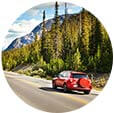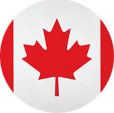The Greatest Drives in Canada
From Nova Scotia in the Maritimes to Alberta’s Rocky Mountains and the British Columbia Pacific Coast, there are lots of popular fly drive holidays in Canada to choose from. These drives wind through some spectacular destinations, taking in landscapes from mountains to cliffs and beaches. When you’re behind the wheel, you can pick and choose where you stop and when you stop. It’s the most independent way to travel.
With so many routes on offer, here at Canadian Affair we’ve picked out three of the best drives in Canada. Read our guide for inspiration on the top spots you can stop-off at, the distance you will drive, and start and end points for each journey.
Cabot Trail, Nova Scotia
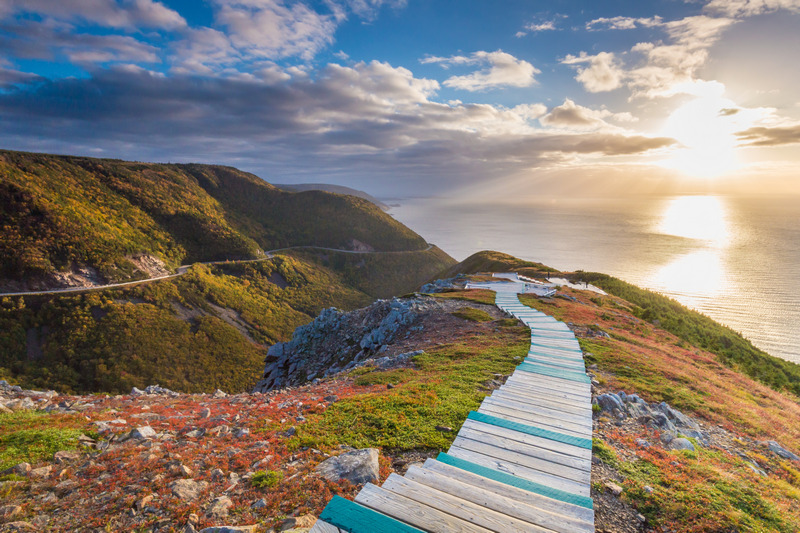
The Cabot Trail is without a doubt one of the most scenic trails in the world with its beautiful coastal views and highland scenery. We’ve already recommended stunning Pleasant Bay and Ingonish Beach but with so many sights to see, you’ll want to stop a lot more than that. Here are other stop-offs you shouldn’t miss:
Baddeck
Located in the heart of Cape Breton Island, the bustling village of Baddeck is the perfect beginning of the Cabot Trail. With its beautiful Bras d’Or Lake, it is a spectacular place to start. During your visit you could pop into the Alexander Bell National Historic site which commemorates the natural and cultural heritage of the region. If you’ve got some spare time before you drive, there are lots of sailing tours you can go on – the region is renowned for whale watching.
Skyline Trail
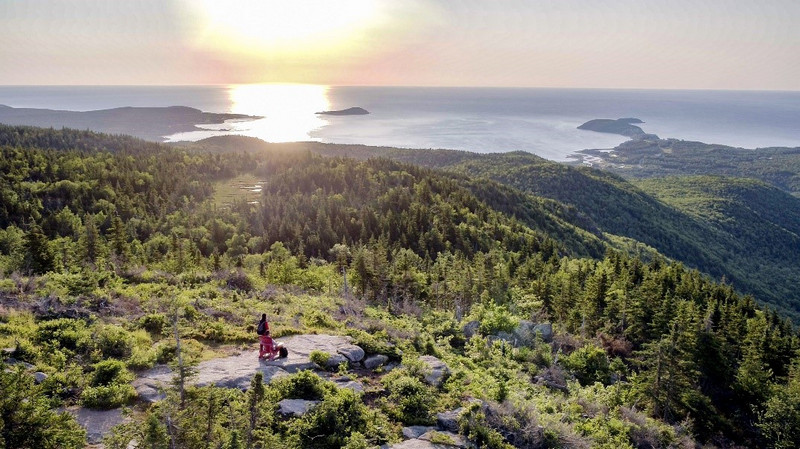
The Skyline Trail is on French Mountain and this dramatic headland cliff overlooks the rugged coast, giving you an eagle’s view of the Cabot Trail as it winds its way down the mountain. You should also keep your eyes peeled for whales in the Gulf of St. Lawrence from the viewing decks and you could also be joined by moose, bald eagles, bears and numerous boreal birds as they live in the area.
Lone Shieling
One of the most famous sights along the Lone Shieling Trail is a replica of a Scottish crofter’s hut, which is found at the very beginning of the trail. This area is one of the most protected in the Cape Breton Highlands National Park as the Grande Anse Valley has one of the largest old-growth hardwood forests in the Maritimes. The hut nestles among 350-year-old maple trees and as a heritage building, it shines a light on traditional crofting of the Scottish Highlands, which Cape Breton closely resembles.
Cap-Rouge
traces of Acadian history as there are remains of an old school and former residents’ houses along the route. When you get to the look-out you will be able to read more information about the families that lived here as well as get unrivalled views of Presqu'île and the Gulf of St. Lawrence.
Sea-To-Sky Highway, British Columbia
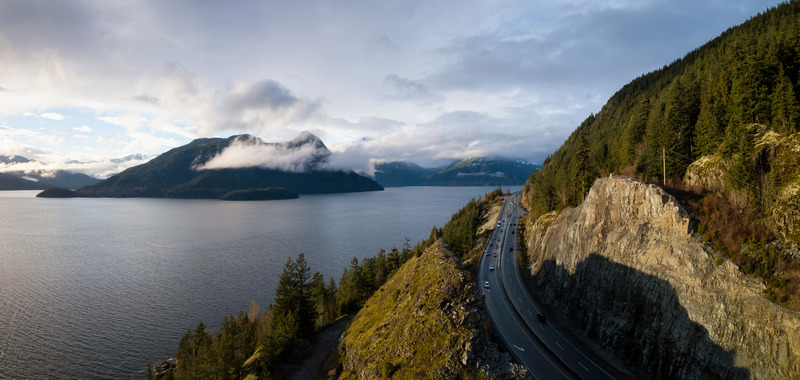
There aren’t many roads in the world with as much spectacular scenery as the world-famous Sea-To-Sky Highway in British Columbia. Officially called the BC Highway 99, the route from Vancouver to Whistler and beyond offers stunning views around every corner and on every straight. There are lots of attractions to visit like the famous Sea to Sky Gondola and Squamish. Here are some more you should visit:
Porteau Cove
Porteau Cove is located on the eastern shore of Howe Sound, the most southerly fjord in North America. The Porteau Cove Provincial Park has waterfront campsites, a beach and is home to a number of water-based activities. So during your stop-off why not go for a swim, try canoeing or go windsurfing? Alternatively, if you’re not keen on getting wet, you can go boating instead. The cove is renowned for being a great spot for scuba-diving as there are two sunken vessels and several artificial reefs.
Shannon Falls
At 1,105 feet, Shannon Falls is British Columbia’s third tallest waterfall and, according to Explore Squamish, is the Sea to Sky Corridor’s most popular spot for a picnic. At the bottom of the majestic falls you’ll see a boardwalk and a trail network that winds in between the towering trees. The falls are very popular during the summer months so consider getting an early lunch to avoid the crowds or visit in spring or autumn when it is quieter.
Brandywine Falls
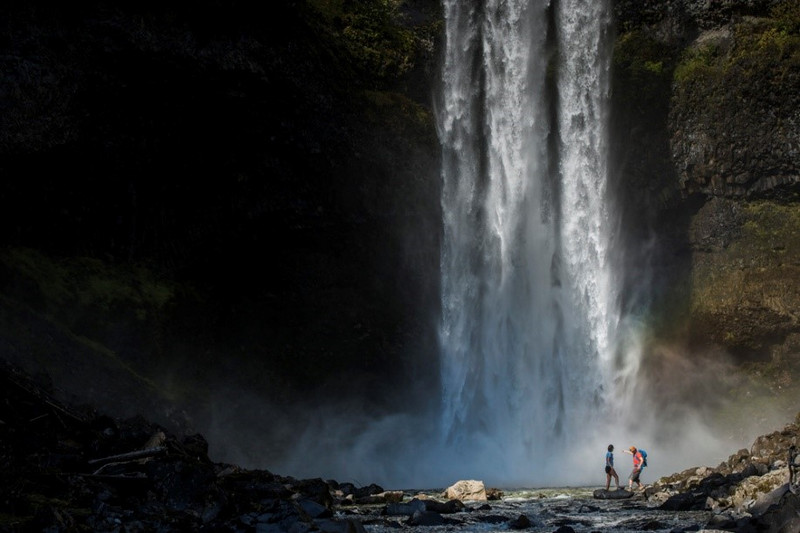
Brandywine Falls is a picturesque 70-metre waterfall that can be accessed via a short trail leading up to a viewpoint. From the viewpoint you’ll be able to get some great views of the waterfall as well as some incredible views of Daisy Lake and the surrounding mountains.
Talking about the Brandywine Falls Provincial Park, BC Parks says on its website: “This park provides opportunities for hiking, picnicking, mountain biking and viewing of the waterfall. The park was tripled in size in 2010 to include unique habitat for red-legged frogs (a provincial ‘blue listed’ species at risk).”
Lynn Canyon
Lynn Canyon is home to the famous suspension bridge in Lynn Valley and is well-worth a visit if you’re driving the Sea-to-Sky Highway. The 50-metre high bridge stretches across the canyon, which boasts waterfalls, raging rapids and deep pools below. The views from the bridge are renowned, as those brave enough to stop in the middle of the bridge will be able to see the entire canyon.
Icefields Parkway, Alberta
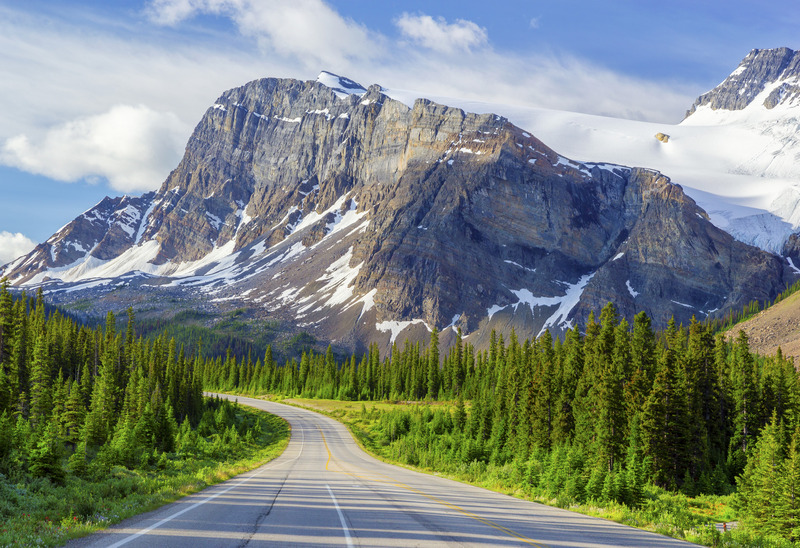
Icefields Parkway links Lake Louise, Banff and Jasper in one of the most stunning journeys you can make on the planet. The 144-mile route boasts top stop-offs like Peyto Lake and the Athabasca Glacier, but there are other spectacular places dotted along Icefields Parkway.
Herbert Lake
The north side of Herbert Lake offers some incredible views of Mount Temple and when it is a calm day the reflection is stunning. Barry, who runs the blog Hiking with Barry, says: “Herbert Lake is a tiny slice of paradise 6km (3¾ miles) north of Lake Louise on the Icefields Parkway (Hwy 93) in Banff National Park west of Calgary, Alberta. The tiny, picturesque, mountain-surrounded lake can be easily missed if you blink, sneeze or happen to glance to the right on the ride by. There are signs, and a picnic area just north of this surrealistic vision. Early morning, with still air and sun from the east, is a very good time to visit.”
Crowfoot Glacier
Located in Banff National Park and just 20 miles northwest of Lake Louise, Crowfoot Glacier can be viewed from a lookout on Icefields Parkway. The glacier is attached to the north eastern side of Crowfoot Mountain and if you are stopping at the lookout make sure to take your camera as the mountain overlooks the beautiful Bow Lake.
Takakkaw Falls
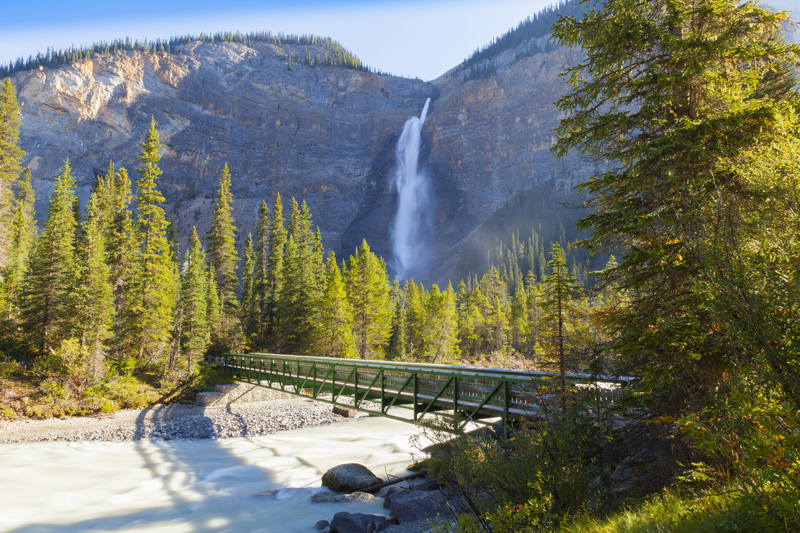
Just a bit further up the road is Takakkaw Falls, around 24 miles north of Lake Louise, another spectacular sight you can see along the Icefields Parkway route. Tumbling an impressive 1,260 feet in total, the falls are among the highest in the whole of Canada. You can either enjoy the views from afar or get up close to the base and enjoy the spray from the waterfall.
If you want to see Canada’s second highest waterfall in full flow you should visit in July when it is at its peak and the glacial meltwater is running freely.
Panther Falls
To access the beautiful 60-metre high Panther Falls you will need to make the short hike from Bridal Veil Falls by parking along the Icefields Parkway. The hiking trail is just under half-a-mile one way and then you’ll come to an opening and will see the thunderous Panther Falls.
Mistaya Canyon
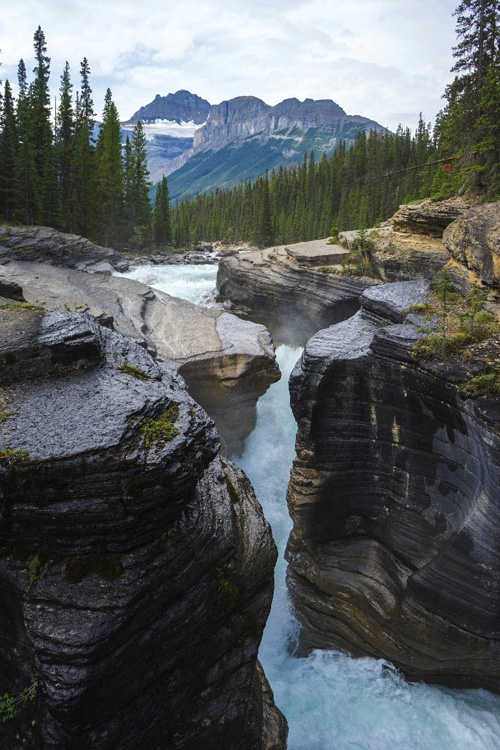
Mistaya canyon is around 45-miles north of Lake Louise and is very easily accessible from the Icefields Parkway. The distinctive curvy canyon walls are not the only photogenic sections of the area, as the views upstream to Mount Sarbach are truly jaw-dropping.
During your visit you can learn more about how the canyon was formed and can walk to Sarbach Fire Lookout and Howe Pass. Barry from Hiking with Barry talks about the two different trails that you can walk during your visit:
“The 4.9km (3 mile) one-way trail to Sarbach Lookout has an elevation gain of 565m (1,855ft.) to a maximum elevation of 2,045m (6,710ft.). The alternate branch to the right is the long, arduous hike to historic Howse Pass.”
Athabasca Falls
If you want to feel the spray of the Athabasca River and listen to the thunder of the water hitting the canyon below you should stop-off at the Athabasca Falls during your drive. To Do Canada says you can follow the trail along the river to learn more about it and the waterfall:
“Hike along the canyon (stay on the trail) and marvel at the deep canyon from various lookouts, caused by the flowing water, which still whittles away the rock floor a few millimetres each year. Cross the concrete bridge, climb down the stairs to the bottom of the falls to see the canyon caused by earlier erosion and appreciate the might of flowing water.”
What are the other great driving routes?
Canadian Badlands, Alberta – The rugged Canadian Badlands can be explored by car as long, straight roads lead into these ancient valleys. You can visit the UNESCO Dinosaur Provincial Park, see unique landscapes, hoodoo rock formations, dinosaur bones and go hiking here.
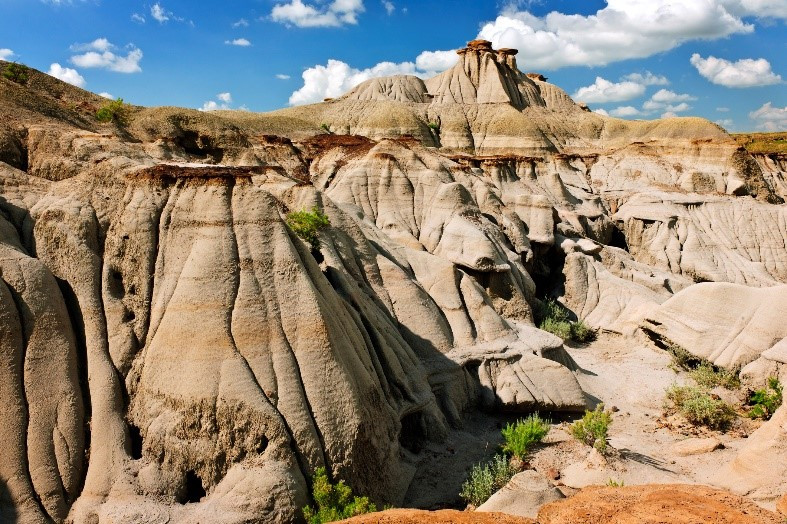
Viking Trail, Newfoundland & Labrador – The 489-kilometre Viking Trail is the only road to the UNESCO World Heritage sites of Gros Morne National Park and L’Anse aux Meadows National Historic Site. Driving end-to-end will take five hours, but it will give you an insight into the Vikings that lived in the region.
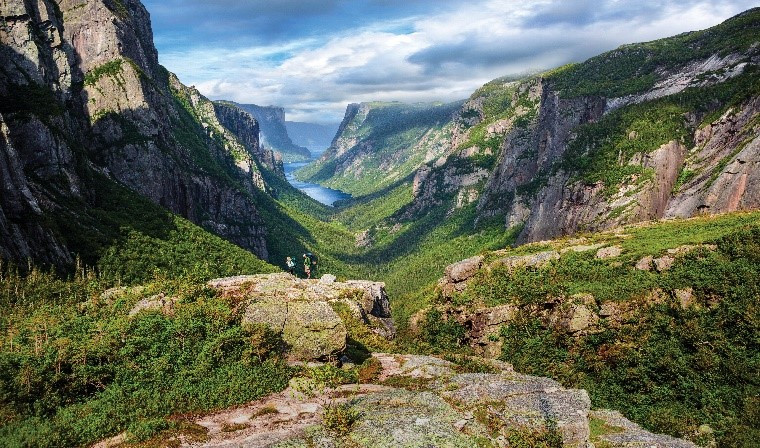
St. Lawrence Route, Quebec – As you may have guessed this 36-mile drive follows the St. Lawrence River and is rated as the best drive in Quebec. Along the way you’ll see picturesque villages of Les Eboulements, Saint-Irenee and La Malbaie.
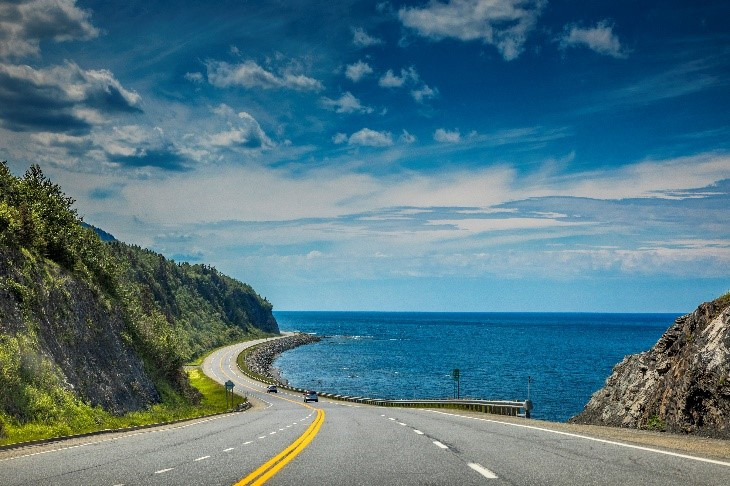
Fundy Coastal Drive, New Brunswick – This 243-mile-long runs along the entire southern shore and extends from the Canada and US border. The Bay of Fundy is the most eye-catching part of the trip, but the forests, lighthouses, footpaths and beaches certainly aren’t bad either.
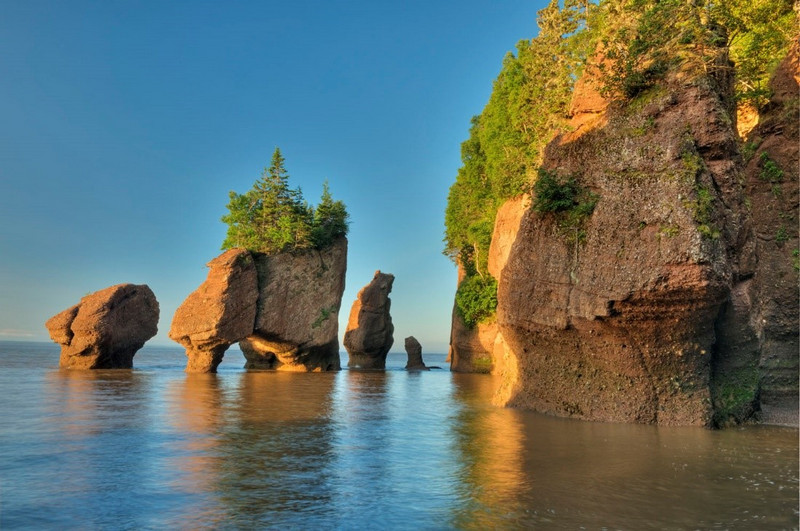
If you want to experience a fly drive holiday in Canada, book your trip with us at Canadian Affair.



